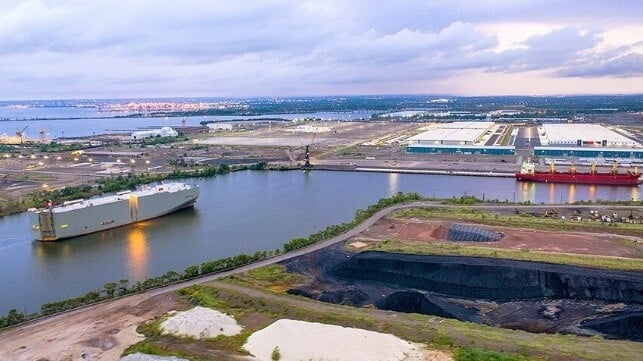After Bridge Tragedy, One Baltimore Cargo Terminal is Still Open

The tragic collapse of Baltimore's Key Bridge has put a new spotlight on Tradepoint Atlantic, the logistics complex located on the former Bethlehem Steel site. Unlike Baltimore's inner harbor, Tradepoint is seaward of the bridge's wreckage, and it is one of the few parts of the city's waterfront still open to deep-sea traffic.
In a statement, the terminal's operator said that it was working closely with officials as the emergency response proceeds.
"Tradepoint Atlantic has been in constant contact with emergency response officials and leaders from Baltimore City, Baltimore County, and the State of Maryland and will continue to coordinate during this extremely challenging situation," the company said. "As part of the Port of Baltimore, we are committed to helping our state and local partners and the entire port community recover and rebuild from this tragedy."
Tradepoint is a receiving terminal for ro/ro vessels in the Baltimore area, and this is a core part of the Port of Baltimore's trade. The port vies with Brunswick, Georgia for the title of biggest ro/ro port in America - but the vast car terminals and parking lots on the far side of the bridge are currently inaccessible. Carmakers Volkswagen and BMW, which both have receiving facilities at Tradepoint Atlantic, have both said that their Baltimore operations are unaffected by the bridge collapse.
The site's importance is only set to grow in years to come. Tradepoint is working with MSC and TIL to build a container terminal at Sparrows Point, which would increase Baltimore's capacity to handle containerized cargo by 70 percent. Subject to federal approval for dredging, it could be open as soon as 2027.
In the meantime, multiple seaports up and down the East Coast have said that they stand ready to absorb the extra cargo volume from Baltimore. The additional cargo per port is not expected to rival the peak surge levels seen during the late-pandemic import boom. The Port of Virginia, which is just 125 nautical miles to the south of Baltimore, has been investing heavily in expansion and is expected to pick up a substantial share of the slack.
“I don’t think we’ll have a large impact in terms of logistics and shipping moving forward. There might be snafus over the next couple days while issues are being worked through, but I think they’ll be able to overcome that pretty quickly,” said Brent Howard, president of the Baltimore County Chamber of Commerce, speaking to The Hill.
